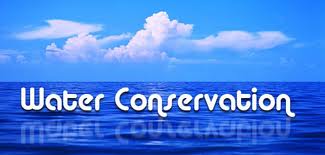
Your rainwater harvesting can help reduce our dependency on water from Northern California and the Colorado River.
Below you will find a variety of ways to collect, store, and filter rainwater. There are simple suggestions for beginning harvesters and more complex ones for those who have a system that they would like to add to.
1. The Collection System
The most effective way of catching water is to begin with a hard and smooth surface such as a rooftop or other raised surface. Keep in mind, the bigger the surface, the more rain will be caught. To get the rain from the roof you will need a system to channel the water, such as a downspout or gutter.
Simple: If sticking with a simple system, just add a mesh screen to your downspout so that all the leaves and debris are filtered out.
Complex: To upgrade your collection system, consider a roof washer! This device diverts the water from the first rainfall to an area outside the storage system so that no dirt or bird droppings get in your harvested water. We have already had our first rainfall but consider the things that accumulate between rainy days.
2. The Storage System
When considering where to store the rainwater you will have to consider costs. You could use anything from a trashcan to a much more expensive galvanized steel tank. Determining how much to spend can also depend on what the water will be used for. If storing for watering plants, a simple garbage can will do. If storing for drinking water you may want to consider a rain barrel. Whatever you choose, be sure that it is stored away from direct sunlight and is opaque. This will help reduce algae. Also, the shorter distance the water has to travel, the better the quality so keep your storage tank close to where you use the water.
Simple: Buy a garbage can with a removable lid. Cut a hole the size of the downspout and/or gutter opening in the lid. Have your gutter and/or downspout lead straight into can but with enough room on each side that you can lift the lid off without having to remove the gutter. You can use a watering can or small bucket to collect the water right out of the can.
Complex: Consider adding a delivery system to your water storage unit. This is a pumped or gravity-fed system that will take the water from your unit to the areas of use.
3. The Filtration System
If you are just using the water for landscape purposes there is no need for a filtration or purification system. If you do wish to use the water for human consumption there are certificate requirements from the Department of Environmental Health.
Simple: As long as you aren’t using the water for human consumption, things stay simple. Use the water for landscape, washing the car, or cleaning off the patio.
Complex: If you are ready to take the next step of turning your rainwater harvest into a small drinking water system, | 













